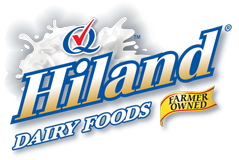Milk’s Journey From the Farm to Your Child’s School
October is Farm to School Month
Have you ever wondered how milk gets from the dairy farm to your your child’s school? Then you’re in the right place!
The 8 Steps from Farm to School
From the dairy farm to your child’s school, milk goes through strict quality controls to ensure freshness, purity and great taste. Dairy foods are among the safest and most highly regulated foods available. Here are the steps milk takes to get from farm to school:
Step 1:
Dairy farmers use milking machines to milk their cows 2 to 3 times a day. It only takes about 5 to 7 minutes for a cow to be milked.
Step 2:
Fresh milk straight from the cow is 101 degrees — that’s because dairy cows are warm-blooded animals. The milk is then pumped through sanitized pipes and is rapidly cooled before it reaches the refrigerated bulk tank where it is stored at 45° F.
Step 3:
Milk is transported from the farm in an insulated tanker to a processing facility. From farm to fridge, milk is never touched by human hands.
Step 4:
Milk is tested for safety before it leaves the tanker. If milk tests positive for antibiotics, it is disposed of so it does not enter the food supply.
Step 5:
After the milk is tested, it goes through a three-step process: pasteurization, standardization and homogenization.
Step 6:
Pasteurized milk is cooled and stored in milk tanks until it is bottled. Bottled products are randomly pulled from production for additional testing.
Step 7:
Additional lab testing of the finished product is done to ensure quality and safety before leaving the processing facility to the grocery store.
Step 8:
Refrigerated trucks transport milk and dairy foods to schools to nourish your children and fuel them with the protein they need to help them succeed!
-Information and images courtesy of Midwest Dairy
Thank you for signing up!









